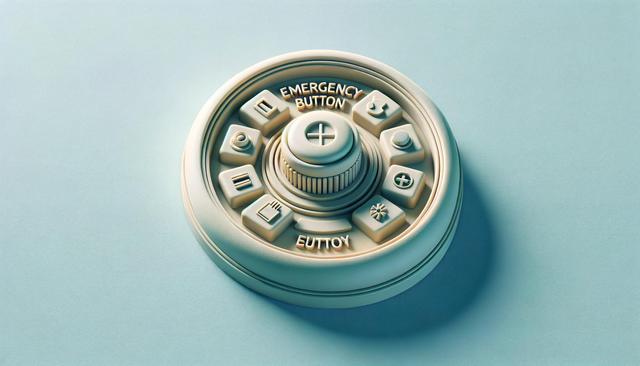
Why Emergency Buttons Are a Vital Safety Tool for the Elderly
Understanding the Importance of Emergency Alert Systems
As people age, the risk of falls, medical emergencies, and mobility challenges increases. For many families, ensuring the safety of elderly loved ones is a top priority. An emergency button for elderly individuals offers a reliable way to call for help instantly when needed. These devices, which come in various forms such as emergency wristbands or wall-mounted units, are designed to be easy to use, even during high-stress situations. By pressing a single button, seniors can alert caregivers, family members, or emergency services, significantly reducing the time it takes to respond to a crisis.
One of the most common applications of this technology is the emergency call button for elderly people living alone. These tools have become a staple in independent senior living, as they allow older adults to maintain their independence without sacrificing safety. Whether worn around the neck or wrist, or kept within reach in key areas of the home, these alert systems are designed with usability and reliability in mind.
Key Features and Variations of Emergency Buttons
Emergency alert devices come in several forms, each tailored to suit different lifestyles and needs. The most recognizable is the medical alert button, which typically connects to a 24/7 monitoring center. Some devices are linked to smartphones or landlines, while others include built-in GPS technology for location tracking. This is particularly helpful for active seniors who may venture outside the home regularly.
Here are some common features found in emergency buttons for elderly users:
- Water-resistant design for use in the shower or bath
- Two-way communication with emergency response teams
- Fall detection sensors that automatically send alerts
- Long battery life and easy charging options
The life alert button is often associated with monitored services, but there are also unmonitored options that alert family members directly. Choosing the right system depends on the individual’s lifestyle, health status, and comfort with technology.
Personal Alarms and Their Role in Promoting Independence
Personal alarms for elderly individuals are more than just emergency devices—they are tools that empower seniors to live independently. Knowing that help is just a button press away can dramatically improve confidence and reduce anxiety around daily activities. This sense of security often encourages seniors to remain active and engaged in their communities, which is beneficial for both physical and mental health.
For caregivers and family members, these devices provide reassurance that their loved one has a lifeline in case of an emergency. The alert button for seniors bridges the gap between independence and safety, allowing for a better quality of life without constant supervision. When integrated with other supportive technologies, such as medication reminders and home automation, emergency buttons become part of a comprehensive care strategy.
Choosing the Right Emergency Alert Device
Selecting an emergency wristband or medical alert system involves evaluating a variety of factors, including budget, features, and lifestyle compatibility. Some seniors may prefer a discreet wearable, while others might require a device with advanced functions like GPS tracking or automatic fall detection.
Consider the following when choosing an emergency alert solution:
- Is the device comfortable and easy to wear?
- Does it offer 24/7 monitoring or family notifications?
- Can it be used both indoors and outdoors?
- Is the system easy to install and maintain?
It’s also helpful to involve the elderly individual in the decision-making process. Their input ensures the selected emergency call button for elderly users meets their expectations and comfort level. Regular testing and maintenance of the device are also crucial to ensure it functions properly when it’s needed most.
Integrating Emergency Buttons into Daily Life
Once an emergency alert button is chosen, integrating it into the senior’s daily routine is essential. Education on how and when to use the device can prevent confusion during an actual emergency. Many providers offer training materials or customer support to help users get familiar with the system.
Placement of non-wearable options should be strategic—near beds, in bathrooms, and in frequently used rooms. For wearables like emergency wristbands or pendants, comfort and accessibility are key. Ensuring the device is worn consistently increases its effectiveness. In addition, caregivers should periodically check the battery status and conduct test calls to maintain system readiness.
By making the emergency button a visible and normalized part of their environment, seniors are more likely to use it confidently. Whether it’s a medical alert button or a general alert button for seniors, the goal is to provide seamless access to help when it truly matters.
Conclusion: Enhancing Safety and Peace of Mind
Emergency buttons are a simple yet powerful tool that can make a world of difference in the lives of seniors and their caregivers. From emergency wristbands to personal alarms for elderly individuals, these devices provide an essential safety net that supports independence while offering peace of mind. By carefully selecting and integrating a suitable emergency call button for elderly users, families can feel more secure knowing their loved ones have immediate access to help in any situation.

